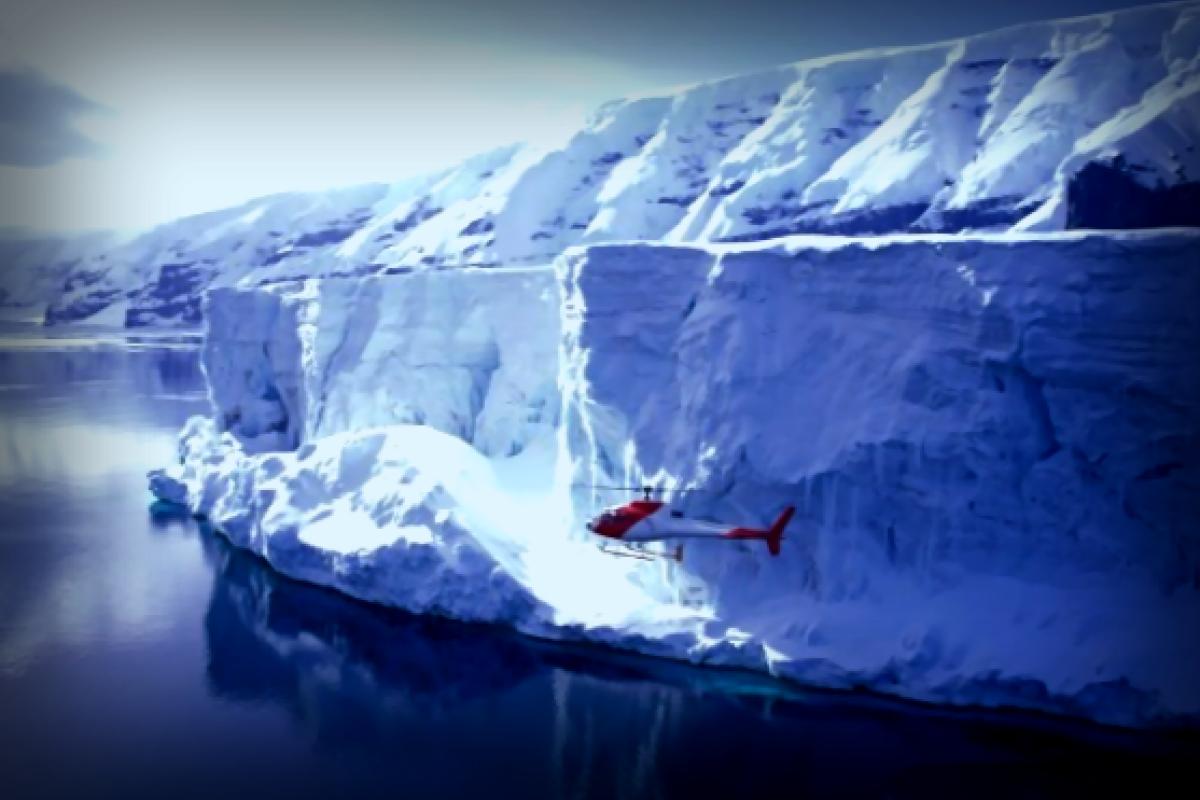Imagine stumbling across a black-and-white aerial shot from 1966, probably taken by a U.S. Navy member mapping Antarctica. It seemed unremarkable until a group of researchers spotted something interesting in it years later.
This vintage snapshot indicated that the Wordie Ice Shelf might be starting to yield.
Turns out, this ancient image is more than just nostalgia. It’s a key piece of evidence that could align our comprehension with the grave reality of Antarctica’s melting scenario and reveal dire consequences if we continue to overlook it.
What’s the deal?
A team from the University of Copenhagen recently compared those nostalgic images to updated satellite views. What they discovered was a subtle yet alarming truth: The Wordie Ice Shelf wasn’t only losing ice from above. The researchers found that warmer ocean currents had really stealthily crept beneath the ice and gnawed at it from the inside.
According to their findings, shared in a release, Mads Dømgaard, the lead author, emphasizes that they’ve seen multiple signs hinting at a potential ice shelf breakdown. These results also provide a treasure trove of points that can be pivotal in tracking how precarious a collapse is—a completely new resource in the field.
Dømgaard suggests this could serve as a critical tool for assessing ice shelves expected to give way or ones that are already on thin ice.
Co-author Anders Anker Bjørk pointed out that the process of ice shelf collapse might unfold more slowly than predicted. However, he also cautioned that this gradual progression could make reversing the trend even trickier. “This is a clear signal for us to prioritize reducing greenhouse gas emissions now rather than postponing it,” he insisted.
Why should we care?
The Wordie Ice Shelf might not seem massive, contributing only millimeters to rising sea levels, but its current state models what might happen in the future.
If larger ice shelves like Ross and Ronne start to disintegrate, that could trigger a much more massive reaction. These shelves are our stabilizers, and once they begin to fade, preventing further decline could become a real struggle.
This is where having trusty tools that help scientists spot early signs of potential collapse can be super crucial. They might just give us the extra time we desperately need to address this looming crisis.
What can we do?
Research like this highlights the urgent need for cities and governments to take serious measures for climate mitigation and adaptation. As Bjørk added, the findings underline the immediate action required to combat the rising tide of pollution that causes ice to melt. They can also guide local officials and community leaders on how to brace for rising sea levels through things like updating flood response plans, revisiting zoning laws, and shoring up essential infrastructure.
But maybe your role ends there? Don’t forget that personal choices can add up—especially when people rally together. Communities can advocate for policies that diminish emissions, urge local governments to brace for rising waters, and embrace renewable energy options whenever they pop up.
This photo sat quietly for decades, unfurling a tale of monumental importance. Its revival is a call to action, and from here on, it’s our collective duty to decide how this unfolds.

Join our free newsletter for good vibes and helpful advice, and don’t miss this amazing list of simple ways to contribute to a healthier planet.
This breakthrough in Antarctic research was first shared by The Cool Down.



















